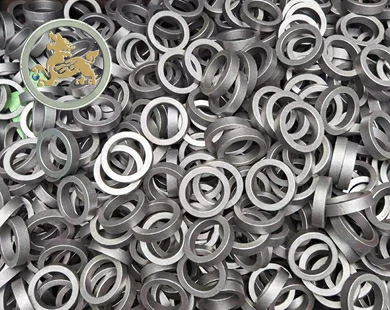How to choose the abrasive for the shot blasting machine and sand blasting machine?
Selecting the optimum Shot abrasive for your shot blasting machine and sand blasting machine hinges on various parameters such as the nature of the surface being blasted, the intended surface finish standard (Sa 2.5), the material to be blasted, and specific application demands. Here’s a guide to aid you in selecting the right abrasive:
Step 1: Define the Surface and Material: Identify the kind of surface you’ll be blasting – this could be metal, concrete, wood, or any other material. Also, assess the surface condition to see if it’s coated, rusty, or polluted with other contaminants.
Step 2: Understand Your Requirements: Ascertain the expected result of the shot blasting process. Is your goal to strip coatings, cleanse the surface, or achieve a certain surface profile? Keep in mind factors such as required roughness, cleanliness standards, and any particular industry or application requirements.
Step 3: Learn about Various Abrasive Types: Numerous abrasive types are available for shot blasting, each with unique characteristics. Some prevalent types include:
– Steel Shot: Best for eliminating scale, corrosion, and old coatings from metal surfaces. It offers a satisfactory surface profile and is recyclable.
– Steel Grit: Similar to steel shot but its angular shape makes it more forceful and ideal for strenuous tasks.
– Aluminum Oxide: A sharp and enduring abrasive apt for removing rust and scale from metal surfaces. It’s also useful for surface preparation pre-coating.
– Garnet: A non-toxic and eco-friendly natural mineral abrasive. It’s typically used for blasting non-ferrous metals, fiberglass, and wood; Suitable for the sand blasting machine and is non-recyclable.
– Glass Beads: Yields a sleek and luminous surface finish. It’s ideal for cleaning and peening applications on softer materials like aluminum and plastics; Suitable for the sand blasting machine and is non-recyclable.
– Crushed Walnut Shells: A gentle and biodegradable abrasive typically used for gentle cleaning and stripping on delicate surfaces; Suitable for the sand blasting machine and is non-recyclable.
Step 4: Evaluate Abrasive Properties: Take into account each abrasive type’s properties like hardness, shape, size, and density. While harder abrasives are more forceful, they could also inflict more damage on the surface. Softer abrasives are milder but might not be as effective for certain tasks. The abrasive particles’ shape and size can influence the surface profile and coverage.
Step 5: Consult with Manufacturers and Suppliers: Reach out to shot blasting machine manufacturers and abrasive providers for advice. They can offer recommendations based on their industry knowledge and experience. They might also provide testing services to determine the most suitable abrasive for your specific application.
Step 6: Evaluate Cost and Availability: Keep in mind the cost and the availability of the selected abrasive. Some abrasives may be pricier or more difficult to procure than others. Assess the overall cost-effectiveness and the availability of the abrasive for your continuous blasting requirements.
Remember, adhering to safety guidelines and recommendations provided by the shot blasting machine manufacturer and abrasive supplier is crucial to ensure safe and effective operation.





